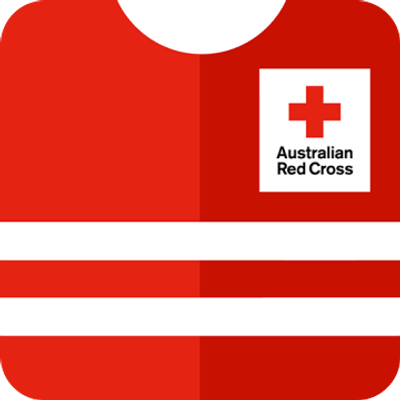Mental preparedness tips for natural disasters
While it’s natural to think about physically preparing for a natural disaster, it's equally important to mentally prepare.
By taking steps to prepare mentally and emotionally for unexpected events, you can become better equipped to handle challenging situations and manage stress.
On this page, you'll find information on:
- Anticipating, identifying, and managing potential stressors
- Practical ways to plan for an emergency
- Tips for protecting your emotional wellbeing.
Scroll down to learn more.
Anticipating, identifying, and managing potential stressors
In life, it’s often the unexpected things that can cause us the most stress and overwhelm.
By educating yourself on what to expect before, during, and after a natural disaster, you can be proactive about what things might potentially impact you the most.
Anticipate
- Before a natural disaster
- You may experience heightened anxiety as you anticipate the potential destruction and loss of life and property. For example, if you live in an area prone to bushfires, you may feel anxious when a hot, windy day approaches.
- You may experience increased panic in the lead-up to a potentially inevitable disaster. For example, you might stop looking after your mental health while ‘waiting’ for the disaster to occur.
- You may be in constant panic to be physically prepared. You might feel the need to stock up on emergency supplies, reinforce your home, have an evacuation plan in place, etc.
- You may feel overwhelmed by the tasks to keep yourself and your loved ones safe
- You may experience physical symptoms such as an upset stomach, skin irritations, and headaches as a result of increased stress while waiting for a disaster to happen
- If you’ve experienced a disaster before, you may experience flashbacks and other effects of trauma.
- During a natural disaster
- Immediately after a natural disaster
- In the long term
Identify
Once you've thought through the scenarios that might impact you, you can use this RediPlan® disaster preparedness guide to make a stress management plan.
Alternatively, you can use your phone's notes app or a piece of paper and the following prompts.

Manage
When it comes to things you can do to manage stress, what works for you might not work for someone else and vice versa.
We all respond to stress differently, which means we'll all manage it differently and that's okay.
Below are practical techniques and strategies that you can turn to when experiencing stress.
- Go for a walk
- Listen to music or an uplifting podcast
- Spend time outside or in a garden
- Try a grounding technique
- Journal your thoughts and feelings
- Meditate or practice mindfulness
- Do this CBT-based thought-challenging activity
- Practise self-care
- Do volunteer work or help others
- Contact a support service like Lifeline or Beyond Blue.
Practical ways to plan for an emergency
One of the best ways you can manage stress during and after a natural disaster is by getting your ducks in a row. (e.g. tackle the to-do list that’s been in your ‘too-hard basket’ for the last few years.)
This can look like:
- Checking that your insurance policy and level of coverage are right for you and up to date
- Taking an inventory of your household
- Actioning any repairs that could help prevent damage in the event of extreme weather.
By taking care of the tasks that require a bit of deep thinking up front, you’ll feel less overwhelmed should you experience a natural disaster.
Helpful checklists to prepare for a natural disaster
- Australian Red Cross RediPlan® Disaster Preparedness Guide
- Create a RediPlan®
- Emergency kit checklist
- Tips for making a home inventory
- Financial Rights Legal Centre - Extreme Weather Checklist
Australian Red Cross and NRMA Insurance have made getting prepared easier by co-creating the Get Prepared app, a digital version of Australian Red Cross' award-winning RediPlan® disaster preparedness guide and RediPlan® worksheet.
You can also find a variety of really valuable natural disaster resources on this Help Nation page and stay up to date with this Wild Weather Tracker.
Emergency contacts and information to keep on hand
- Call 000 for police, fire, or ambulance
- Call State Emergency Services (132 500) for help in storms and floods. In life-threatening situations, call 000
- Find your local frequency at ABC Local Radio for essential up-to-date information, including advice from authorities and available support
- 13 HELP (13 43 57) is Lifeline's 24/7 dedicated support line for people living through bushfire recovery or struggling to cope with an extreme weather-related event. You can always call 13 11 14 if you prefer.
Tips for protecting your emotional wellbeing
Ultimately, the best way to protect your wellbeing is to ensure you're practising self-care and keeping your life as normal as possible.
This means establishing and sticking to daily routines, getting enough sleep, eating well, socialising, and moving your body.
Here are a few more ways you can protect your wellbeing:
- Build a strong social support system by connecting with friends and family
- Create an emergency self-care box you can access when you’re feeling anxious
- Create backups of important photos and memories to reduce the chances of losing them
- Establish daily mindfulness or relaxation techniques to manage stress and anxiety
- Listen to calming or mood-boosting playlists
- Prioritise and protect your sleep
- Consider seeking professional mental health support, especially if you have lived through a prior natural disaster or have a history of anxiety, depression or trauma.
Click here to download, save, or print our natural disasters fact sheet.








